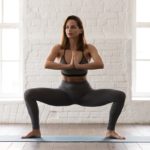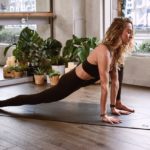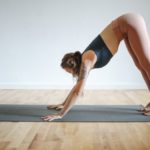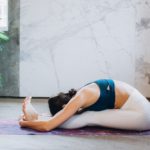What is vinyasa yoga? An easy guide for newcomers

Relaxation, workout or personal challenge, all these reasons are good to start practicing yoga. On the other hand, there are now more and more yoga styles to choose from. It can be a bit overwhelming to figure out which is best for us. After hot yoga and kundalini, here is another yoga practice: vinyasa. Relaxation and wellness are at the core of this yoga, with a practice based on a movement-breathing synchronization. Before jumping head first into this yoga, here’s what you need to know.
1 Vinyasa Yoga Origins

Vinyasa yoga is a dynamic and physical yoga practice. It comes from a yoga school created by Shri K. Pattabhi, which follows indications contained in a manuscript called “Yoga Korunta” by Vamana Rishi, in addition to his oral teachings. From these indications, vinyasa movements focus heavily on breathing and posture. Nowadays yogis keep applying these principles by synchronizing their movements with their bodies through roughly 50 poses.
2 But what is it exactly?

The main goal of vinyasa yoga is to become the flow by associating a move with each breath. The practice is, therefore, more fluid and dynamic, which consequently involves the muscles more than other types of yoga. That’s why this type of yoga is the most common in gyms, because it allows muscle gain while improving flexibility, lung capacity, concentration and posture. Moreover, this yoga is especially good for calming down through fluid energy. Finally, in order to ease the movements, vinyasa yoga is often accompanied by music.
3 A few basics

Meditation and breathing techniques are central to vinyasa yoga. Beyond these techniques, you also need to master a few basic moves. Here they are:
- ujjayi, to regulate breathing;
- bandhas to have a good muscle workout;
- drishti for an open-eye meditation based on our capacity to focus on something;
- Dhyāna, or movement meditation in order to move fluidly.
All in all, even though vinyasa yoga aims to control your breathing and relax, its different poses will also have a positive impact on your muscles, your flexibility and your posture. It will definitely be a practice appealing to those who love relaxing with different sounds.
Cover photo credit: Bigstock
